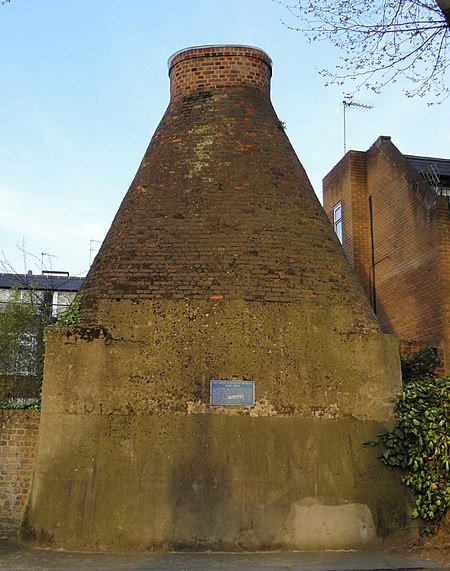Pottery Lane

Pottery Lane is a street in Notting Hill, west London. Today it forms part of one of London's most fashionable and expensive neighbourhoods, but in the mid-19th century it lay at the heart of a wretched and notorious slum known as the "Potteries and the Piggeries". The slum came to the attention of Londoners with the building of the Hippodrome in 1837 by entrepreneur John Whyte. Unfortunately for Whyte a public right of way existed over his land and "dirty and dissolute vagabonds" from the nearby slum invaded his racecourse, adding to his financial difficulties and, in part, leading to the closure of his venture in 1842. Pottery Lane gradually improved in the late 20th century along with the rest of the Notting Hill area, and today the houses there fetch multi-million pound prices. Just one of the original brick kilns still survives; it is located in Walmer Road, just north of Pottery Lane, and bears a commemorative plaque placed there by the Royal Borough of Kensington and Chelsea.
Excerpt from the Wikipedia article Pottery Lane (License: CC BY-SA 3.0, Authors, Images).Pottery Lane
Pottery Lane, London Notting Hill (Royal Borough of Kensington and Chelsea)
Geographical coordinates (GPS) Address Nearby Places Show on map
Geographical coordinates (GPS)
| Latitude | Longitude |
|---|---|
| N 51.5089 ° | E -0.21 ° |
Address
Pottery Lane 34
W11 4LZ London, Notting Hill (Royal Borough of Kensington and Chelsea)
England, United Kingdom
Open on Google Maps











